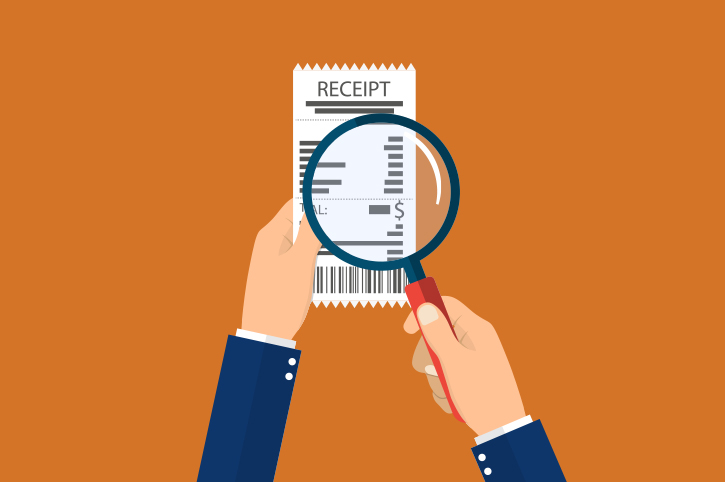Eliminate Manual Expense Management

If you’re managing employee expenses manually, either with a paper system, a spreadsheet, or a combination of the two, then we have some questions for you.
- Are your employees and managers getting tired of swapping spreadsheets and passing papers?
- What other policy documents do your employees need to reference as part of the reporting process?
- How quickly are you reimbursing employees once they submit their reports?
- Are you concerned about expense theft?
Have you been asking yourself these questions, too? If so, are you happy with the answers? Or are you looking to change them?
Is an automated system better than manual expense management?
Expense management software can help you do away with spreadsheets, paper, and a manual expense reporting process that comes with extra administrative work, slow processing, and the potential for lost revenue.
But how do you know if now is the right time to update the way you manage expenses? Below, we’ve outlined four common issues that can help you decide whether or not now it’s time to consider a software solution.
As your company grows, it’s difficult for a manual expense reporting system to keep up. When the volume of expense reports to review, approve, and reimburse gets higher, a software solution like ExpenseWire can help you increase efficiency and ease. Request a demo, and learn more.
Know the limits of manual expense management
Using spreadsheets or paper for expense management might make sense when you’re just opening a business. And it’s possible that certain aspects still work.
- After all, a packet of receipts clipped to a paper expense report leaves a paper trail.
- And a functional, well-tended spreadsheet can do the job when expenses are minimal, and your employees well-managed.
But what happens when the paper trail gets thick, and your employees become more far flung? When is the right time to switch?
Here are four common issues to watch for. If they pop up, they might indicate that it’s time to stop making excuses for your manual system, and begin taking the steps toward a fully automated, mobile-friendly solution that scales.
1. Your employees want to submit expenses from the road, but they can’t.
With a manual expense reporting system, your traveling employees have to keep their receipts, then deal with them when they’re back in the office. When your people are out conducting business, do you really want them to worry about which pocket they left their receipts in?
- Mobile, email, and web-based interfaces let employees submit, review, and approve expenses at their convenience when they’re on the go.
- Employees can enter expenses, along with copies of their receipts, using a mobile device. And they can do so from their hotel room, from the backseat of their taxi, or even before they leave the restaurant.
- Expense management software also gives employees real-time access to policies, calculations, and alerts related to the company’s expense policy.
2. Your approval process takes a long time.
If employees feel bogged down by the extra administrative work it takes to complete expense reports, how do they feel about waiting around for reimbursements? If your process is slow on the front-end, then chances are, reimbursements might be slow as well. Expense management software can help you optimize this process, so you can reimburse employees quicker.
- Your expense management software can send alerts to managers every time an employee submits an expense.
- Automated workflows and email reminders can improve reimbursement turnarounds.
- Fast turnarounds can encourage employees to submit their expense reports on time, knowing that they’ll receive reimbursements quickly.
3. Your current expense management software leaves employees wondering why their reimbursements are delayed.
Speaking of slow reimbursements, where do your employees go when they’re waiting for a reimbursement? Chances are, they’ll check with their managers, HR, or even go straight to payroll—all of which can cause lost productivity at work.
- Your expense management system can take your per diem rates into account, and set restrictions to help your employees stay within spending limits. This can help employees avoid submitting reports that raise questions.
- At any time, employees can log into the system to check the status of their expense reports. The system can help them find the answers they need.
- Your expense management software can send employees email notifications if and when they need to clarify an expense on their report.
4. You’re worried about human error or expense fraud.
Did you know that workplace crime costs businesses $50 billion per year? And nearly $1.9 billion is from expense fraud. Whether expense fraud is intentional or accidental, a manual expense reporting system lacks the safeguards that expense management software provides.
- With a manual expense reporting process, mistakes are easy to make, and difficult to track.
- Most expense management software includes expense report auditing capabilities. These can provide an additional level of review in order to catch human errors.
- You can include pre-approved expenses into the software, as well as spending thresholds.These types of features can help reduce accidental errors, as employees avoid claiming expenses that are outside of your company’s policy.
If your expense management process has become more tedious than it should be, or if every expense report comes with questions, now might be the time to face concerns head-on, and tap into the benefits that expense management software can bring.
You can set ExpenseWire to let employees know whether or not specific line items are acceptable and within the company’s expense policy. Features like these can help eliminate confusion, and increase efficiencies. Contact ExpenseWire, and find out more about what the software can do for you.
